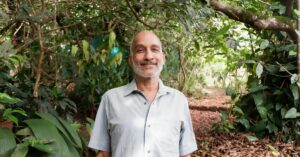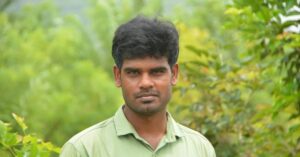Tamil Nadu Man Single-Handedly Creates Lush Forest in 100 Acres of Barren Land
D Saravanan spent three years to collect indigenous seeds from farmers and sacred grooves across Tamil Nadu and Puducherry. Here’s his exceptional journey
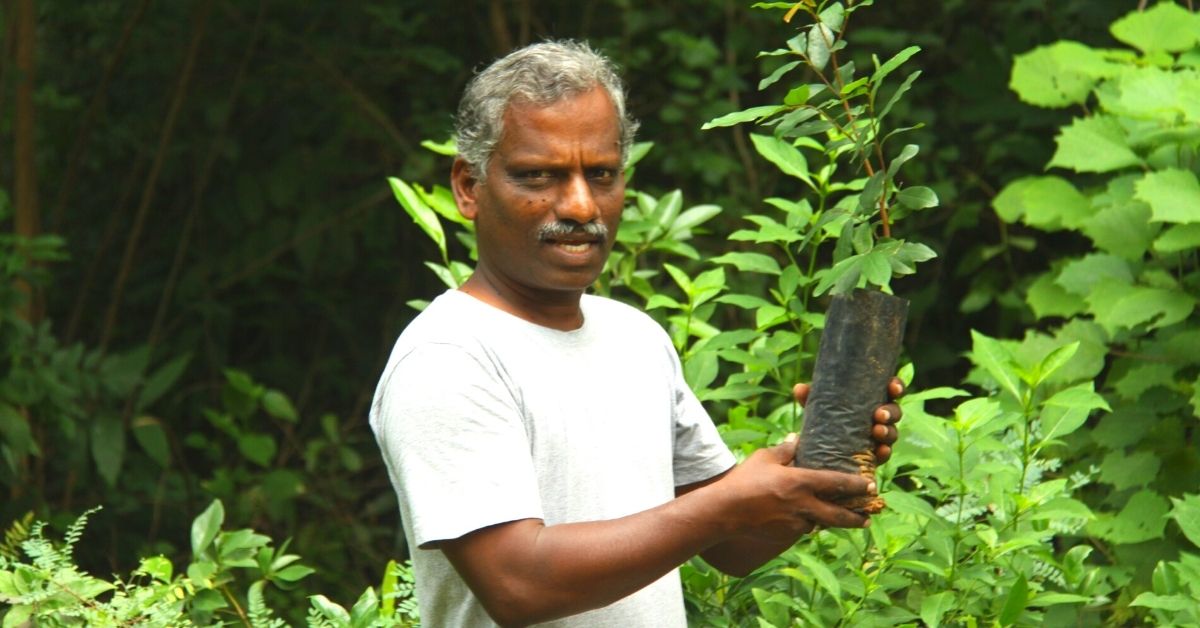
D Saravanan could not be a more fitting example of Mahatma Gandhi’s famous quote, ‘Be the change you wish to see in the world’.
A true environmentalist at heart, Saravanan dedicated nearly 25 years of his life to turn barren land into a green luscious forest spread over 100 acres, now known as the Aranya Forest and Sanctuary in Poothurai village, Tamil Nadu.
In 1994, Joss Brooks, an Australian who played a role in restoring Auroville’s ecology, invited Saravanan to join the Auroville Green Work Resource Centre (AGWRC) as a teaching assistant. Brooks learnt about his passion for the environment in a rally.
Impressed with his work, co-members of AGWRC, Rauf Ali and Nevi, who originally started Aranya, gave him the responsibility to look after the place and develop the ecology.
Although Saravanan was honoured with the responsibility, it was indeed a bold commitment. The land was devoid of any vegetation, and though several individuals and experts had tried planting seeds, no one recorded any success. Even the grass refused to grow.
So what gave Saravanan, a class 12 graduate, the confidence to transform such a humongous land into a forest?
“It was my family. I have grown up seeing my mother, father and uncles always fighting against development that comes at the cost of the environment. I was 14 when I participated in the 100-day march for ‘Save the Western Ghats’ rally and though I didn’t understand much, I knew infrastructural development had big repercussions. So when I got a chance to make a difference in Auroville, I grabbed it. Others’ failures didn’t deter me. Their mistakes became my learning curve,” Saravanan, now 52, tells The Better India.
Thanks to his exemplary work and dedication, the forest has over a crore tree and 900 species of indigenous plants like Diospyrus Melanoxylon, Gloriosa superba, Memecylon Umbellatum and Derris Ovalifolia. The forest is home to six man-made water bodies and pristine ravines.
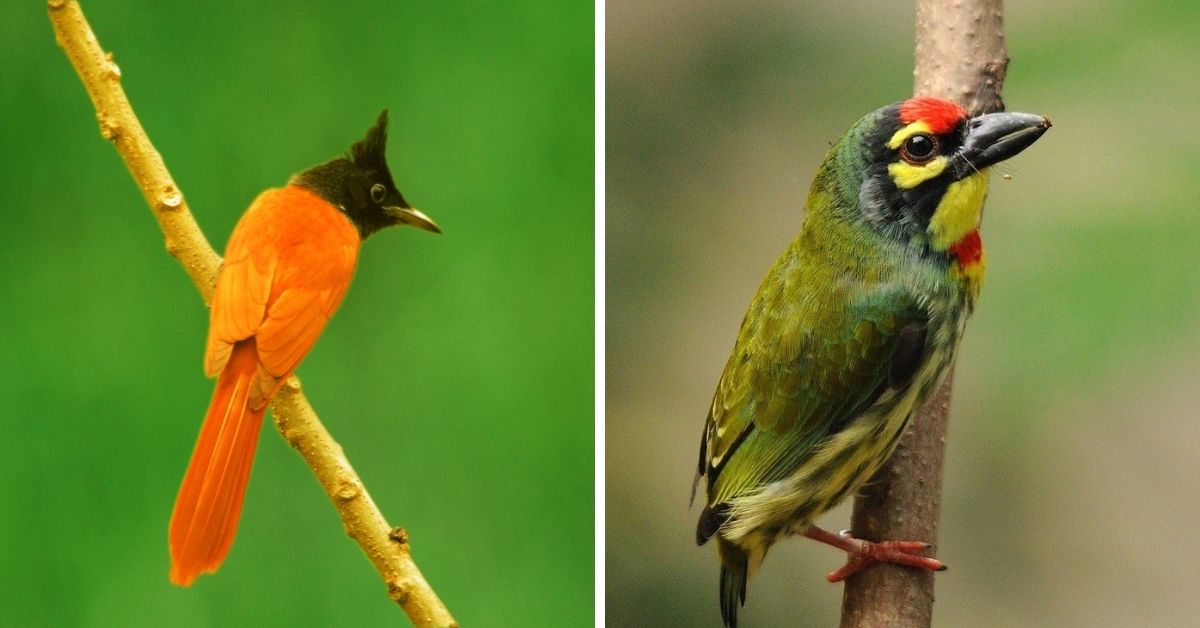
Nearly 240 varieties of birds, 54 butterfly species and 20 species of snakes further enhance the compelling biodiversity of the forest. It’s also a haven for rare and endangered species like Felis chaus (jungle cat), Viverricula indica (Civets), Canis aureus (Jackals), Bubo bubo (Eagle Owls) and Varanus bengalensis (Monitor Lizards).
Saravanan lives in a house built at the entrance of the forest, along with his wife, Vatchala, and teenage daughter, Narchelvi. At present, he is the honorary wildlife warden of Aranya Forest and Sanctuary.
Breathing Life into A Barren Land

Carefully choosing plant species that were rainfed and climatically adjustable and also ones that made the land fertile were important aspects that determined the green future of Aranya.
Changing the health and ecology of land was time-consuming and labour intensive. It took him and the local volunteers nearly three years to level the land.
“The water tables stood at a depth of 150 feet, which meant there was no way a plant could survive without us watering it daily. Now, this was not an option considering the water scarcity problems in the area. So, to increase the water tables we opted for rainwater harvesting systems via bunds. The bunds also helped in controlling soil erosion by diverting the water runoff to ponds and reservoirs,” explains Dr Krishnan, former Deputy Director in the state government’s irrigation department. Being a local, he was one of the first few people to join the movement as a volunteer.
They dug a 100-foot deep borewell and built six reservoirs and one check dam to capture every drop of rainwater for the initial plantation of grass and millets.
“The grass is to attract birds who play a crucial role in enhancing the ecosystem as they bring insects and worms. Bird droppings essentially act as fertilisers for plants. Our trick worked and within two weeks we had bird settlements. Further, the land was covered in mulch to increase fertility,” he says.
Saravanan was very strict and particular about the seed collection drive for he had to ensure the survival rate was decent. He made a seed calendar for different seasons and every month he would travel to different places to source seeds from farmers.
Saravanan labels this as the “most daunting task” as sometimes the seed wouldn’t be ready or the farmer would be missing. Such cases demanded multiple trips and a delay in their schedule.
The troupe went to sacred groves like Putupet, Oorani, Thangal, Alapakkam and Bahor; Kurumbaram scrub jungle and Jawadhi Hills across Tamil Nadu and its neighbouring states to get saplings and seeds.
Once home, Saravanan started a nursery to nurture the seeds personally before planting them in the ground. Closer to the monsoon, Saravanan and his men started the plantation.
“We chose the monsoon season as this saved us water and also familiarised the plantations with rainwater. From the very beginning we trained the plants to survive in limited water,” he says.
The three-year project to plant thousands of indigenous trees was funded by the International Development Research Centre (IDRC). After that, funding then came from government and non-government organisations to develop the forest.
Challenges: Poaching to Objections from Locals
Educating the villagers about the massive plantation project and getting their corporation was not easy for Saravanan, even though he spoke the local language and was one of their own. Initially, the villagers were upset as now the land was not open to cattle grazing.
So, Saravanan came up with a barter system where villagers would cooperate and in return, they would get fodder for their animals. He dedicated a small portion of land just to grow fodder. The impressed villagers came on board and even offered cow dung as a fertiliser for plants at no cost.
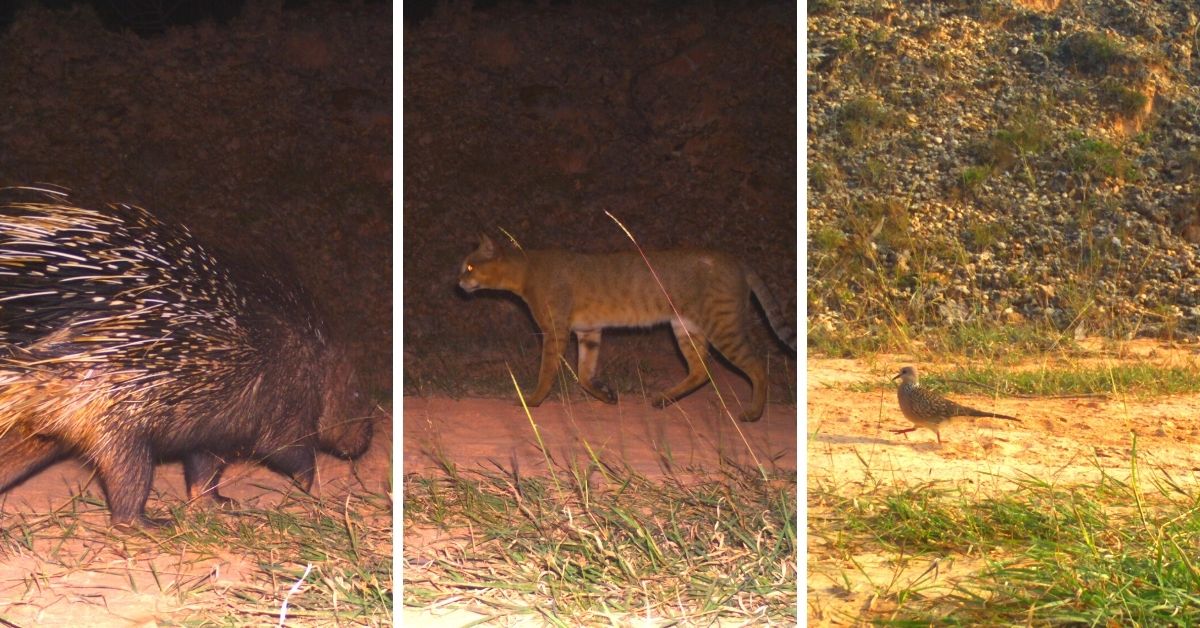
When the animals and birds returned to nature in the newly created forest, a few poachers took advantage and started carcass trading in the mid 2000s.
“Poaching affected the health of plants and vegetations. As animals reduced, we noticed the leaves were drying faster. Apart from installing a wired fence, I spent months educating the villagers about the ecosystem and global warming. Eventually, we mitigated poaching,” says Saravanan.
Impact
With a survival rate of 80 per cent, the forest started developing several species of flora and fauna every year and by the mid 2000s the depth of the water table reduced to 40 feet, a highly applaudable feat.
With canyons, bird nests, two-decade-old banyan trees, bonsai creations, climbers to ferns and moss, the forest offers a spectacular view to the tourists. Seasonal rivulets, pebbles spread across the land and the sandstone facade further beautify the region.
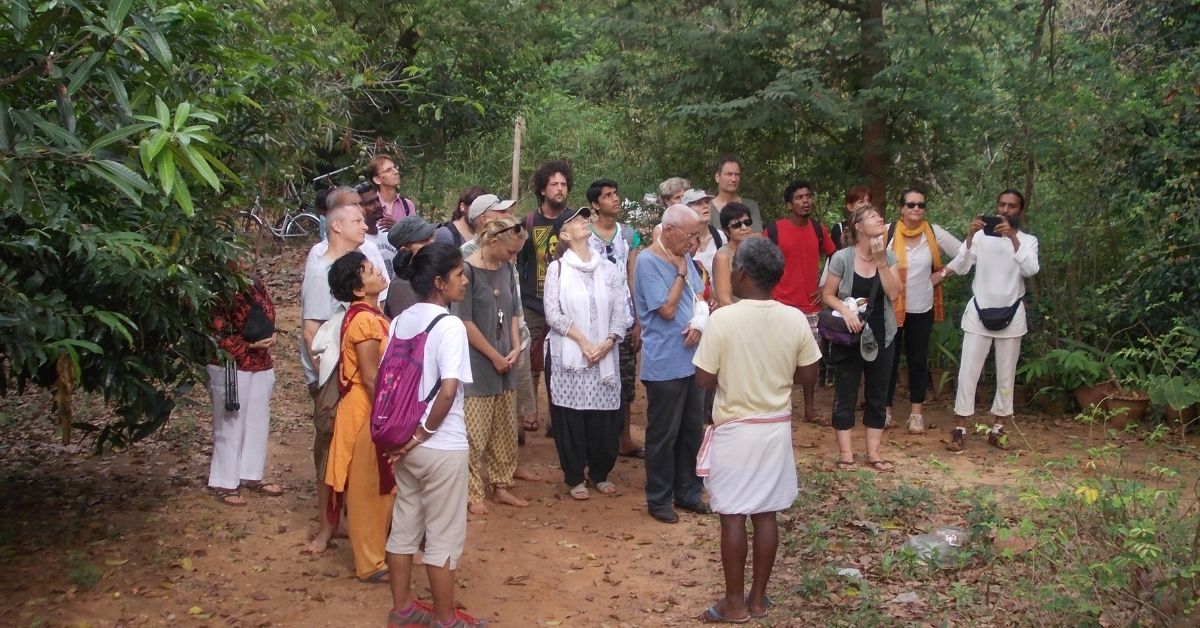
Apart from locals, the government and various organisations also extend support to the forest and maintenance of the indigenous plantations. Year on year people started flocking from all over the world to see this historic revolution. This encouraged Saravanan and Vatchala to take workshops for adults and children.
“College and school students have their excursion trips to the sanctuary to study biodiversity and its ecological implications. I am happy to pass down the information and spread awareness to the future generations,” he says.
Along with improving the air and water quality—as the greens and moisture perpetually keep the temperatures lower by 1-2 degrees—Saravanan has achieved a personal victory. He can now identify or differentiate the voices of animals just by their footsteps, something that only experts like wildlife officers or photographers can achieve.
Edited by Yoshita Rao
This story made me
- 97
- 121
- 89
- 167
Tell Us More
We bring stories straight from the heart of India, to inspire millions and create a wave of impact. Our positive movement is growing bigger everyday, and we would love for you to join it.
Please contribute whatever you can, every little penny helps our team in bringing you more stories that support dreams and spread hope.






